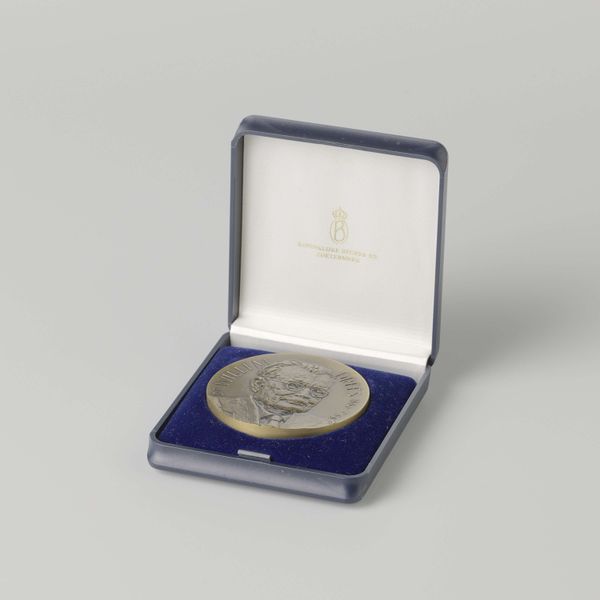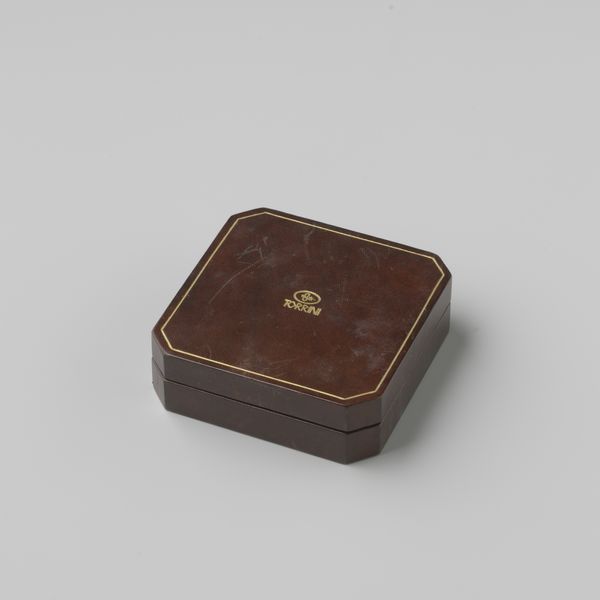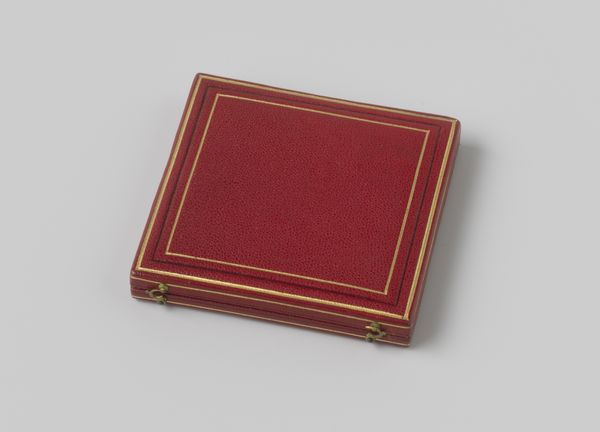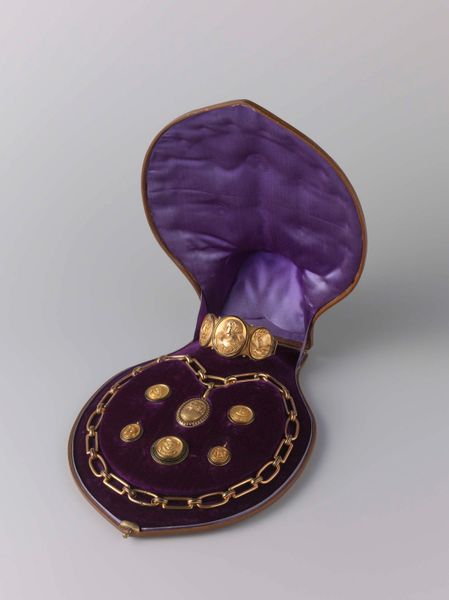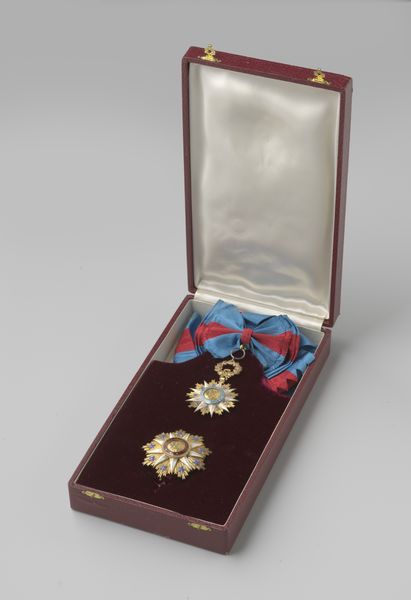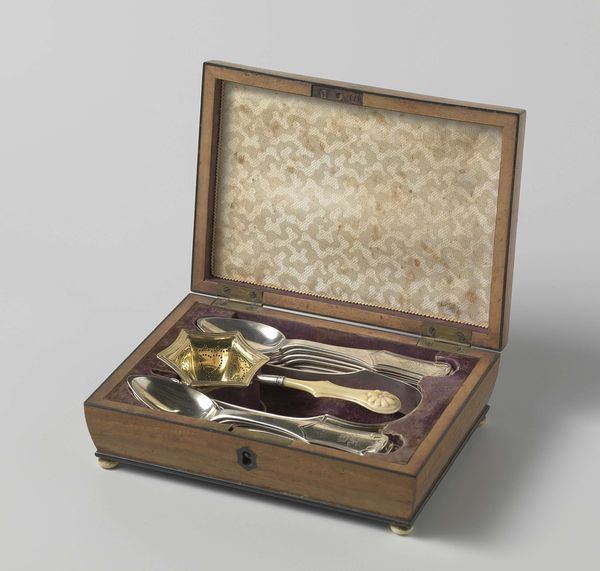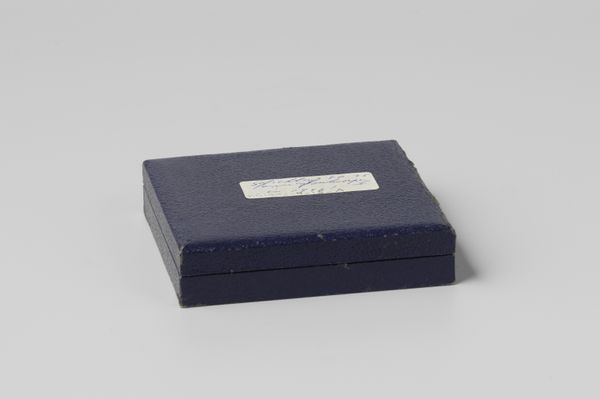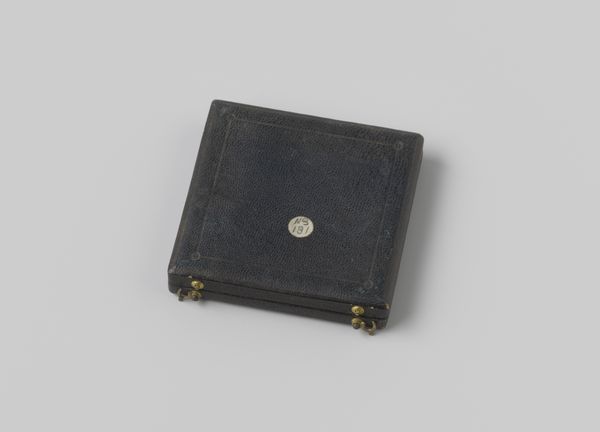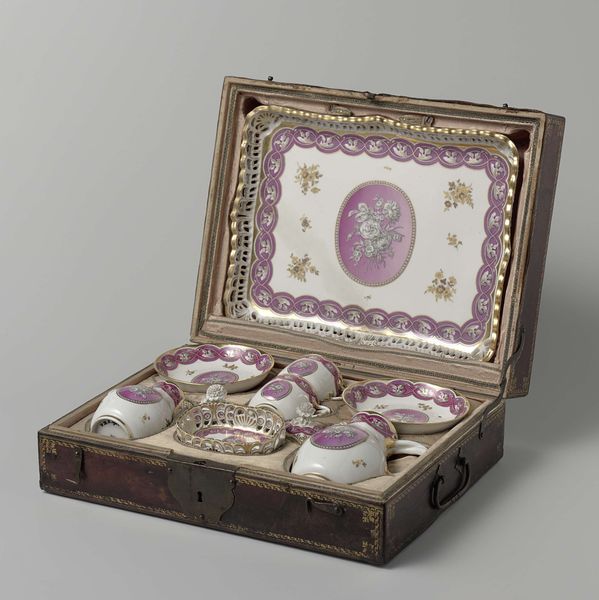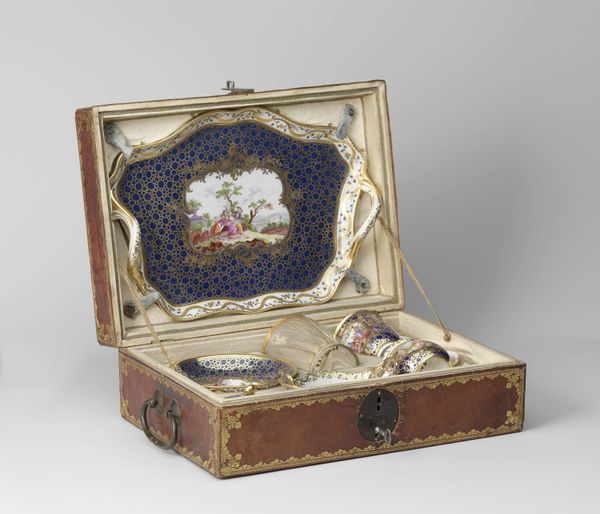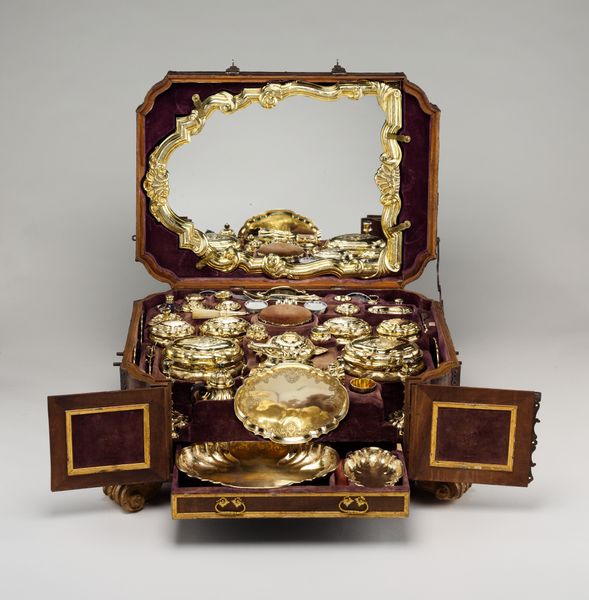
Doos bij penning Dr W. Drees, minister president 1951
0:00
0:00
photography
#
portrait
#
photography
Dimensions: depth 11 cm, width 11 cm, height 2.3 cm
Copyright: Rijks Museum: Open Domain
Curator: Here we see a photograph of a commemorative box from 1951, titled "Doos bij penning Dr W. Drees, minister president," attributed to the Koninklijke Utrechtsche Fabriek van Zilverwerken van C.J. Begeer. Editor: It presents such a formal, almost solemn, presence, doesn’t it? The muted tones, the deliberate arrangement—it all speaks of a carefully constructed significance. Curator: Indeed. It contains a medallion dedicated to Dr. W. Drees, who was a prominent figure in Dutch politics. Medallions, throughout history, serve as potent symbols. What significance might this object carry, given the time and figure involved? Editor: I'm drawn to the materials, the crafting of the box itself. The precision evident in the photography hints at larger questions about Dutch silverwork practices: Who were the laborers crafting these objects, and how were these tokens disseminated? Curator: Silverwork does bring in other levels of meaning, and it is certainly possible that the metal of this particular example would act as a statement of national strength and virtue during the postwar years in the Netherlands, embedding certain ideologies into an everyday item. Editor: Absolutely. These are not accidental details. Consider the company logo prominently displayed— it's a statement about quality and provenance. This medallion and its presentation speak volumes about branding and consumerism even in supposedly high minded tokens. Curator: Precisely, branding allows it to acquire associations beyond just pure aesthetics, which makes this image a fascinating historical capsule for material and immaterial cultural expressions. Editor: It shows how deeply symbols were embedded in economic and manufacturing processes. It is fascinating to remember those levels today.
Comments
No comments
Be the first to comment and join the conversation on the ultimate creative platform.
